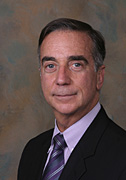AIDS at 30
On June 5, 1981, the first five cases of what came to be known as AIDS were reported in the Center for Disease Control and Prevention’s Morbidity and Mortality Weekly Report. Five gay men in Los Angeles, each diagnosed with a rare form of pneumonia, heralded an epidemic that was, in fact, already under way in major cities across the United States and around the world.
In the 30 years since those first reports, 25 million people have succumbed to AIDS-related illnesses. Today, more than 33 million people are living with HIV/AIDS. Yet we’ve come a long way in 30 years, and in many respects progress on AIDS is one of the most remarkable success stories in the history of biomedical research. Here, we look back on those 30 years – the very early days of the epidemic, the research accomplishments that have led to life-saving treatments, and our hope for the future.
AIDS at 30: A Relentless Search for Answers
Thirty Years On, A Stark Choice on AIDS
Snapshots of an Epidemic
| |
Perspectives
|
|
|
 |
|
“From day one, we decided to deal with the fundamental aspects of the AIDS problem. We were mostly people coming from the scientific and medical worlds and we had specialized knowledge that we could exploit in the fight against AIDS.”
Interview: Mathilde Krim, Ph.D.
Remarks at United Nations General Assembly: Mathilde Krim, PhD
|
| |
|
|
 |
|
"I will not be silenced and I will not give up and I will not be ignored."
Elizabeth Taylor, amfAR Founding International Chairman (1932-2011)
|
| |
|
|
 |
|
“I saw a friend of mine who I hadn’t seen in a long time, and his face and hands were covered with purple lesions. I went inside and spoke to Dr. Friedman-Kien, and he told me that he thought this was ‘only the tip of the iceberg.’”
Larry Kramer
|
| |
|
|
 |
|
“In 1979, I was working with a hematologist [at the University of California, San Francisco], and we started to see a number of young, otherwise healthy gay men who had chronically swollen glands.” Donald I. Abrams, M.D.
|
| |
|
|
 |
|
“I was seeing kinds of morbidity amongst sexually active young gay men that could not be adequately accounted for, and certainly by 1980 I was well aware that there was, at the very least, a new complicating factor at play among many individuals with multiple sexually transmitted infections.”
Joseph Sonnabend, M.D.
|
| |
|
|
 |
|
“In late 1985, when I was 24, closeted, and working on Wall Street, I was diagnosed with AIDS-related complex … There was a real sense of panic about AIDS in this country, and there was talk of quarantine.”
Peter Staley
|
| |
|
|
|